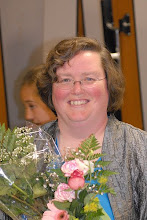One of the best things about “traveling by fiction” is that I can experience a different time as well as an unfamiliar place through a story’s setting. Barbara Cleverly’s first mystery in the Inspector Joe Sandilands series is an evocative introduction to the India of 1922.
Sandilands, a dashing survivor of the trenches of World War I France, is a Scotland Yard Inspector on loan to the government of Calcutta. He is just about to escape from what he considers a hellish country when he is dispatched to investigate the latest in a string of mysterious deaths on a British army outpost.
The victims have all been wives of British officers, all dying under strange circumstances in the month of March. The murders are strung out so much over time -- the serial murderer apparently interrupted by the advent of World War I, among other things -- that the first thing Sandilands must establish is that they were, indeed, murders. This he does with the able assistance of the woman who drew him into the mystery and Naurung, an extremely engaging and capable young native Indian police officer who becomes the Inspector’s sidekick.
The book held some disappointments and frustrations for me. I wanted a glossary to define unfamiliar terms that were used without explanation, such as “nabob.” The secondary and tertiary characters tended towards caricatures, to the extent that I had a hard time keeping the bereaved husbands straight. I was also disappointed at how easily Sandilands was manipulated by the young woman who drew him into the mystery. And I never completely bought his change of heart from a desperate desire to head home to England at the story’s opening to a growing emotional attachment to India by the end of it.
In spite of these flaws, the story kept me engaged, in large part because of the descriptions of the exotic location and the mores of a fascinating era.
About halfway through the story, Sandilands travels to Calcutta in search of the husband of one of the victims. “Initially, brass plates discreetly announced the presence of banks, insurance companies, the Calcutta office of internationally known trading houses, engineers, architects, and solicitors. But soon the brass plates got smaller as the number increased. Brass plates gave way to cards. The number of bell pushes multiplied. Names appeared on upper windows, front doors stood open. Kites circled the damp air and crows pecked crumbling cornices.”
Later he explores the countryside on horseback. “Topping a jungle-clad ridge, their road turned downwards towards a village presided over by a rhythmically creaking water wheel, turning and turning and lifting buckets to send a flush of water down the many irrigation channels. Thirty or so mud-walled houses with thatched roofs huddled companionably together, set out to no obvious plan and with no eye for drainage or ventilation as far as Joe could make out, but scattered, it seemed, haphazardly about a central square in which stood a venerable peepul tree. In the windless day spires of smoke rose from many households, bringing with them the sharp smell of dung fires and cooking.”
I’m glad I read the entire story, because the end was unexpected but logical and satisfying, hinging on the brilliant motivation of the seemingly unlikely killer.

No comments:
Post a Comment